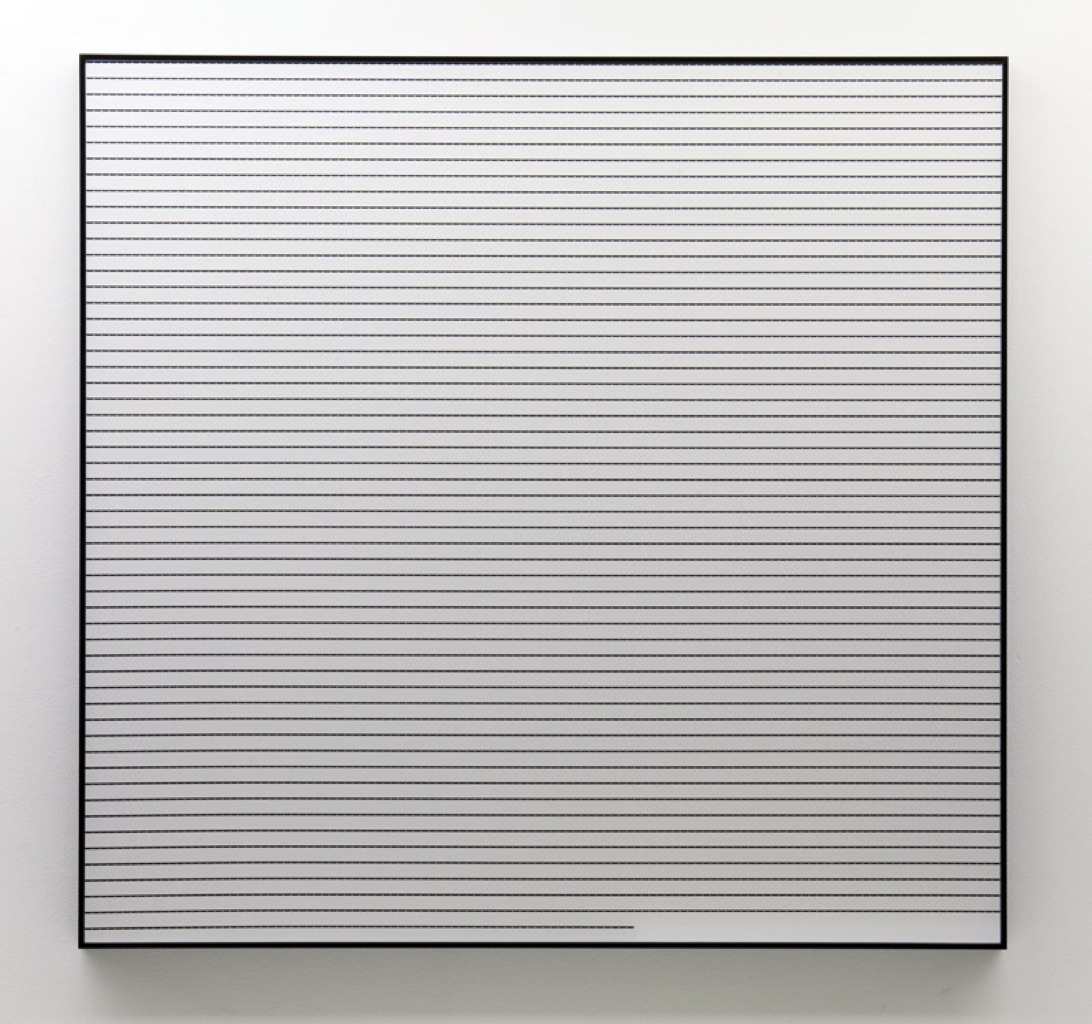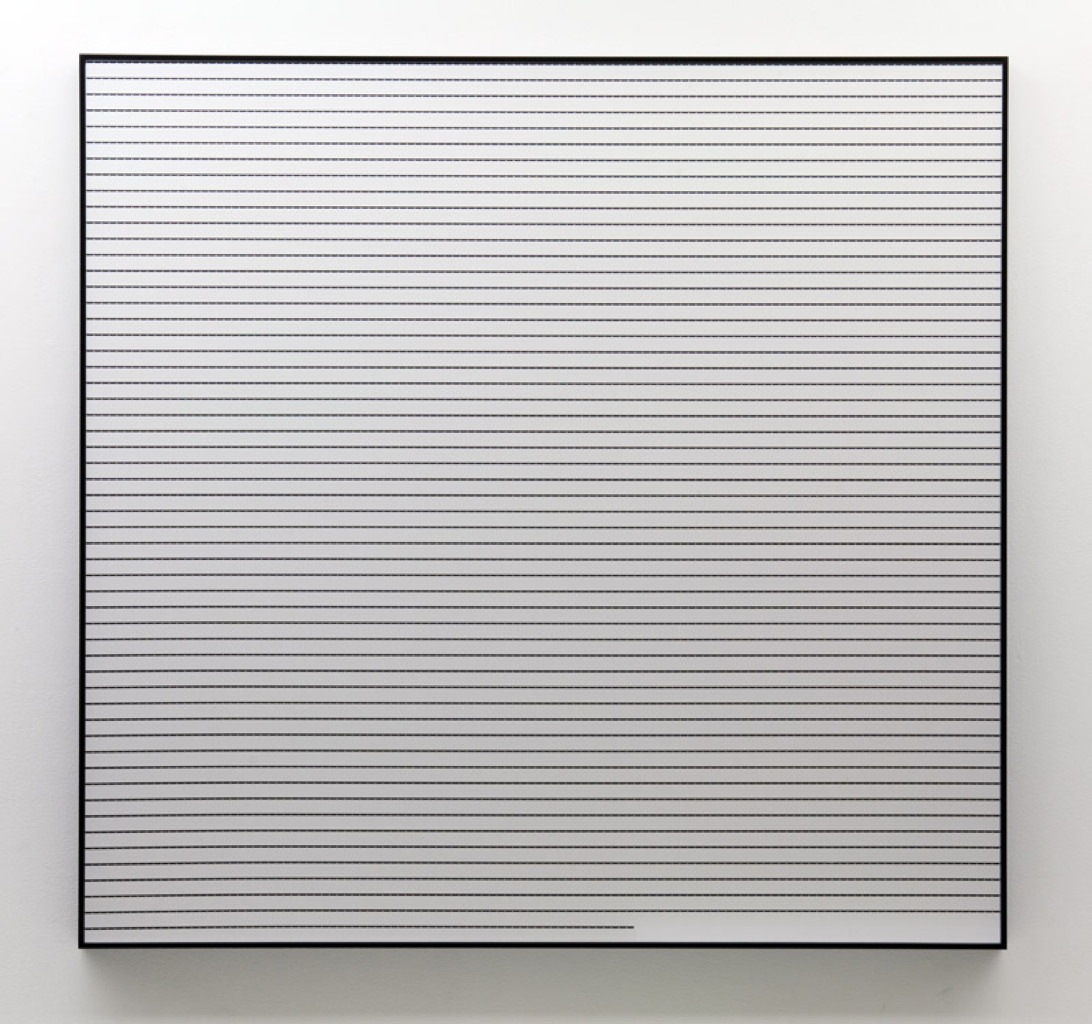- Artist/s
- Ryoji Ikeda
- Title
- 4'33"
- Year
- 2010
- Category
- Other
- Material / Technique
- 16mm film, cardboard, frame
- Dimensions / Duration
- 88 x 92,5 cm
- Description
- »4'33"« by Japanese sound and video artist Ryoji Ikeda consist of unexposed strips of 16 mm film. The strips are empty – save for the timecode of the manufacturer Aaton, which is visible. The framed strips of film result in an overall film length of four minutes and thirty-three seconds.
In his work »4'33"«, Ikeda refers to the eponymous composition by American composer John Cage, which premiered on 29 August, 1952 in Woodstock (New York). Cage’s musical score contains no notes, consists however of three movements. During the premiere of Cage’s »4'33"«, pianist David Tudor indicated the three movements by shutting and opening the piano’s lid. With a stopwatch, he timed the exact lengths of each of the three movements with 33 seconds, 2.40 minutes and 1.20 minutes. Instead of the expected silence, the ambient sounds, like the audience’s rustling and coughing, or the enraged departure of some irate concert guests shifted into focus. At the premiere of »4'33"«, which has also been dubbed »silent piece«, the work caused a scandal; Michael John White reported in 1982, “People began whispering to one another, and some began to walk out. They didn’t laugh – they were irritated when they realized nothing was going to happen, and they haven’t forgotten it 30 years later: they’re still angry.“ [1] Cage’s composition marks the beginning of the utilization of ambient sounds as music, and at the same time demonstrates that there is no such thing as absolute silence.
[1] Richard Kostelanetz, »Conversing With Cage« (New York: Routledge, 2003), p. 70
Author
Hannah-Maria

